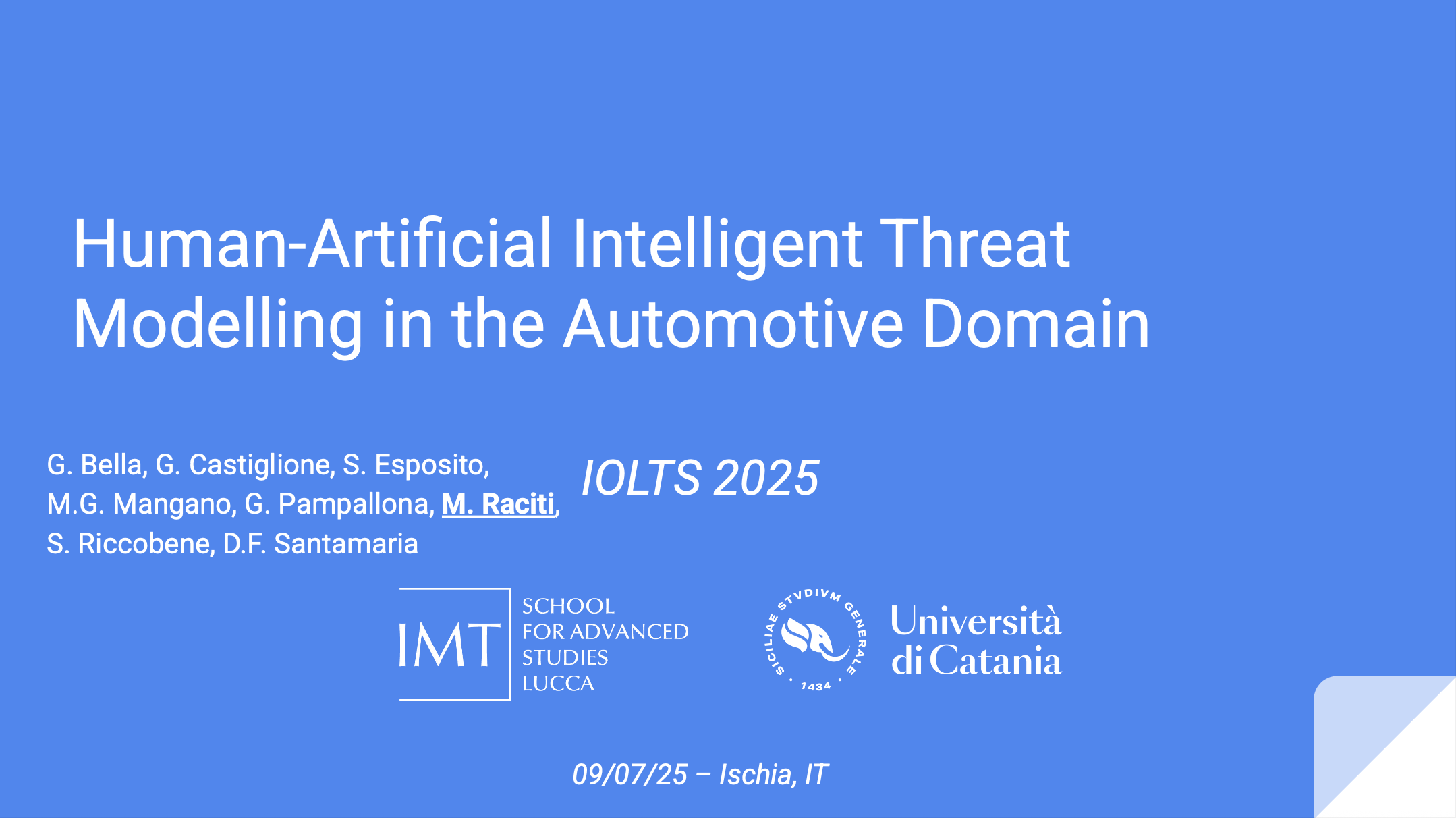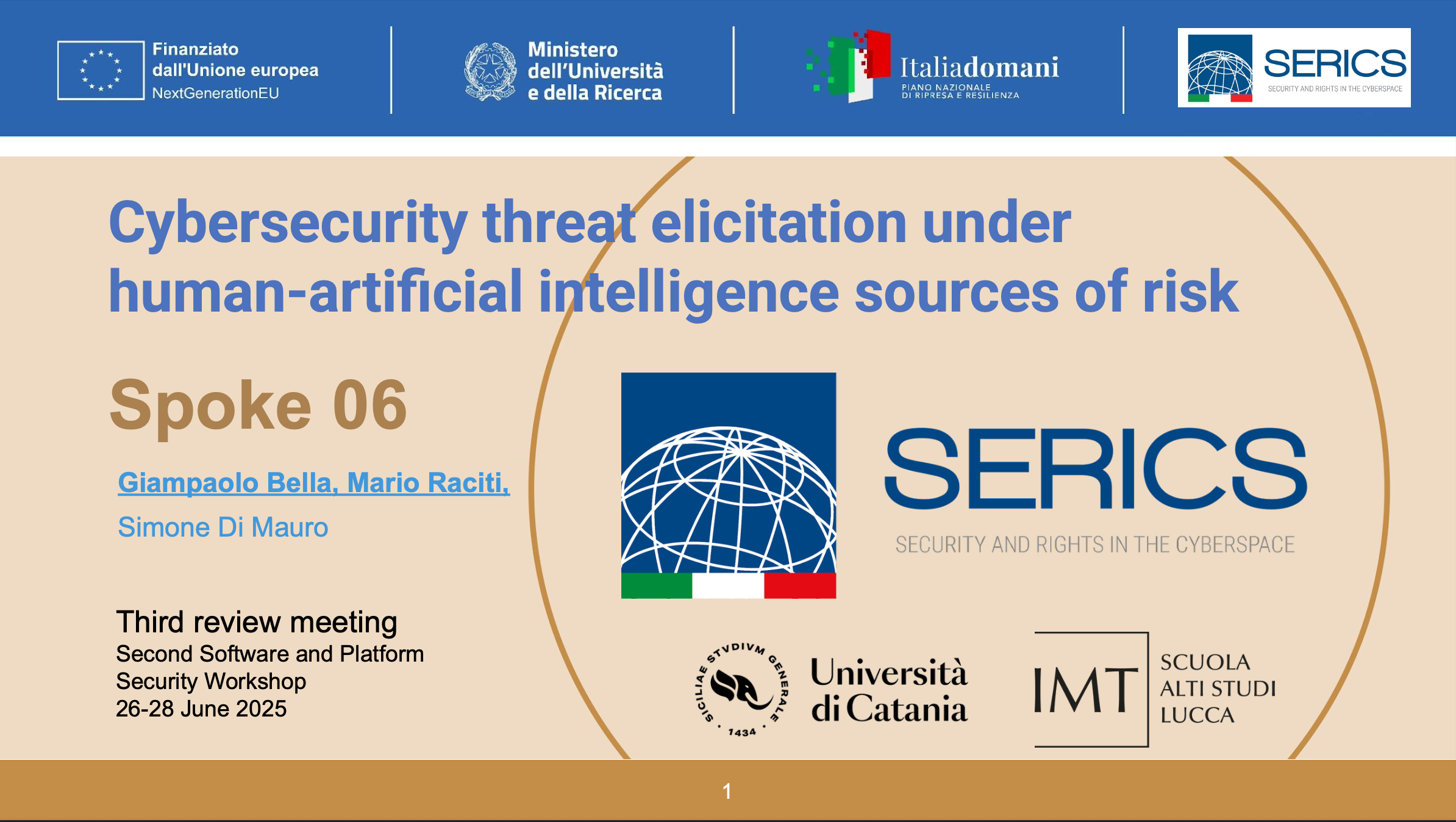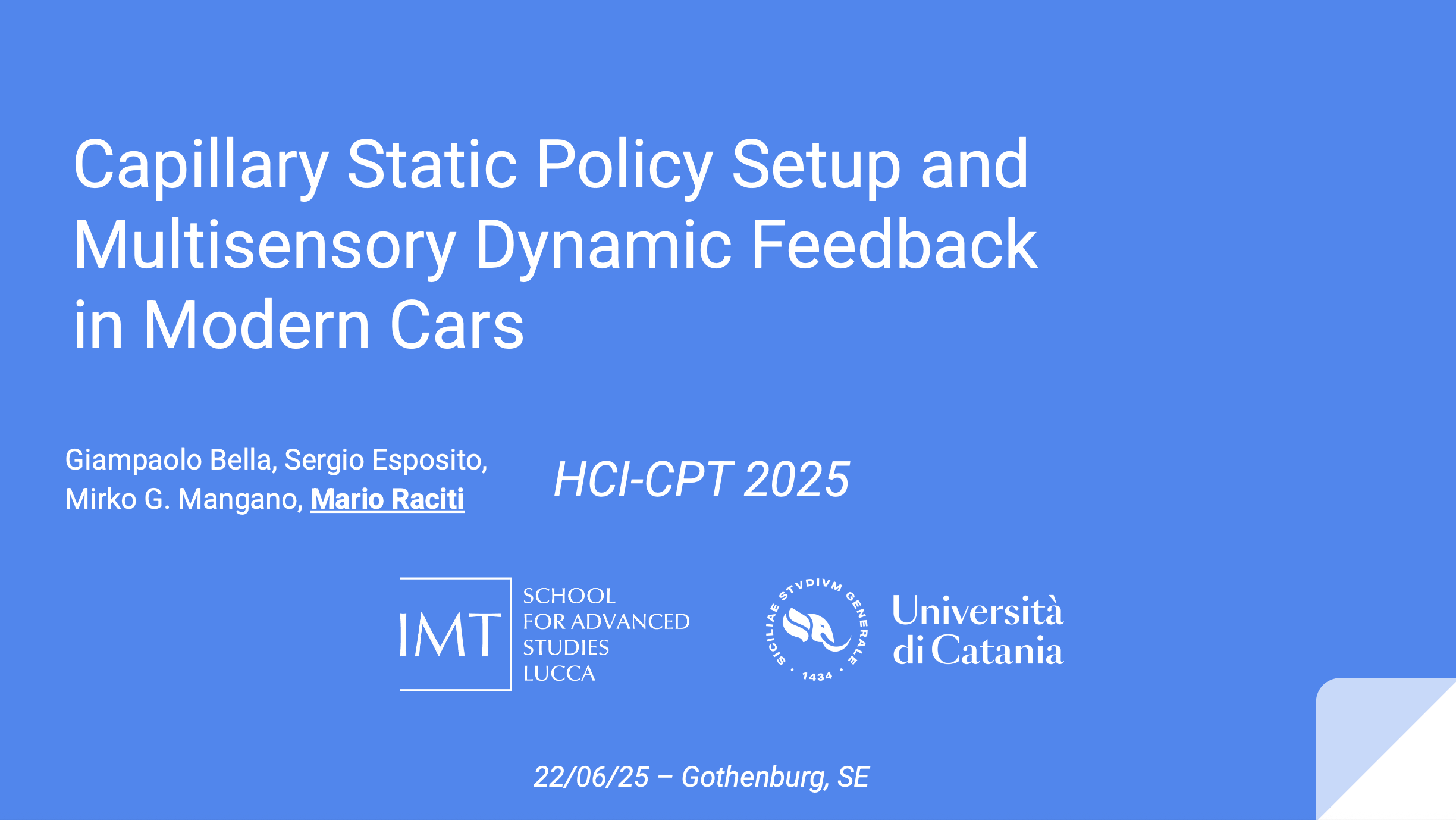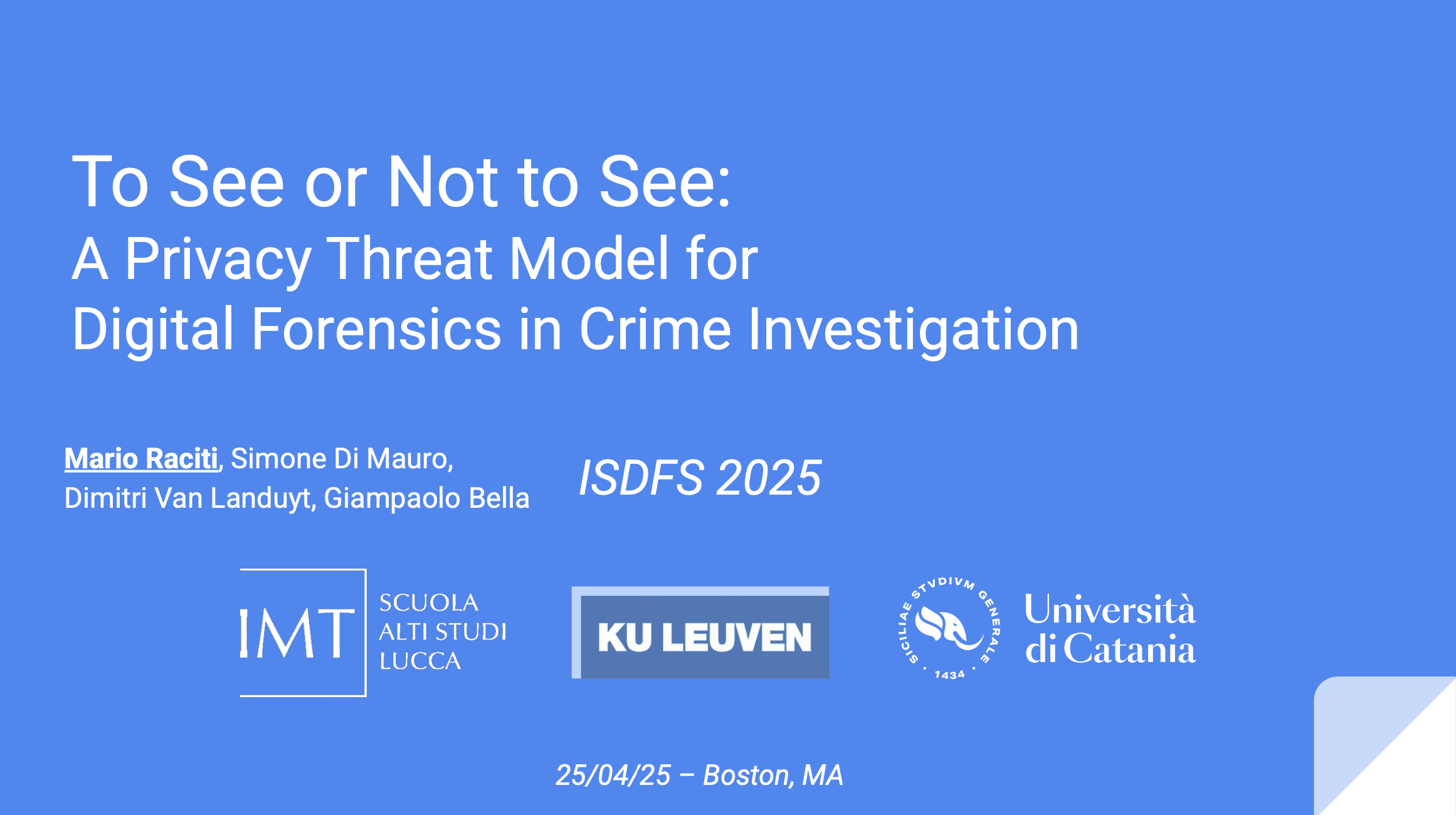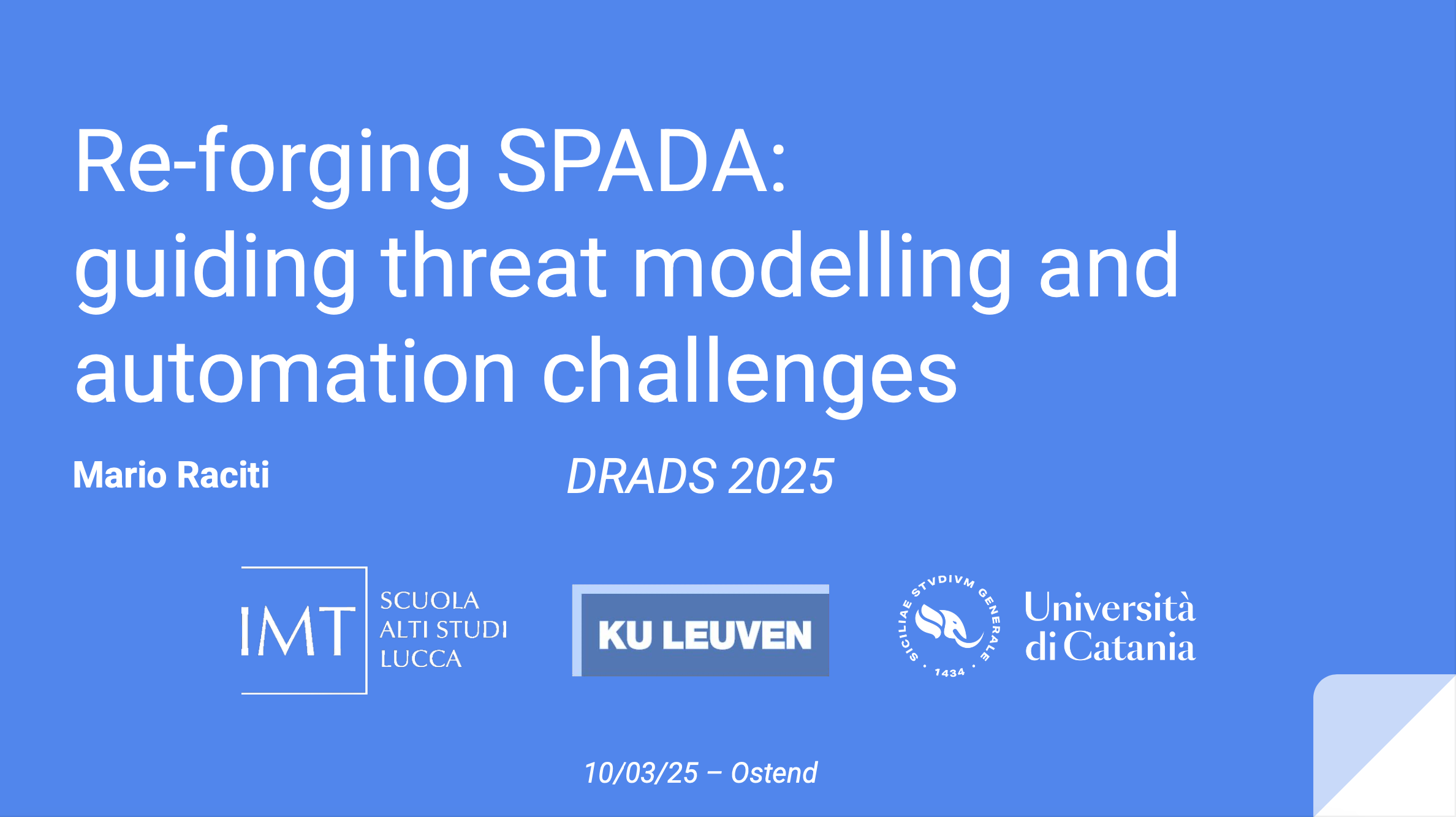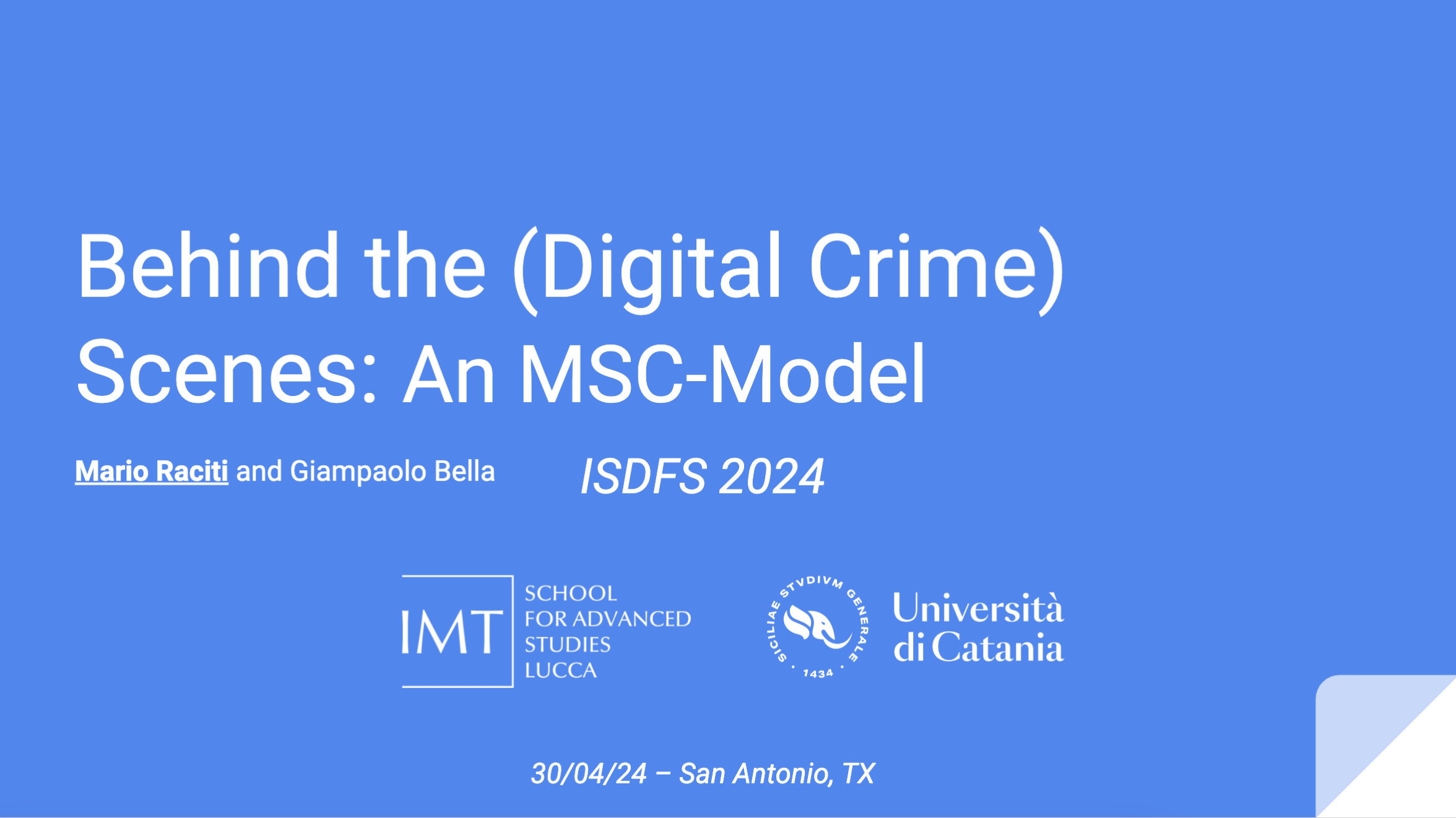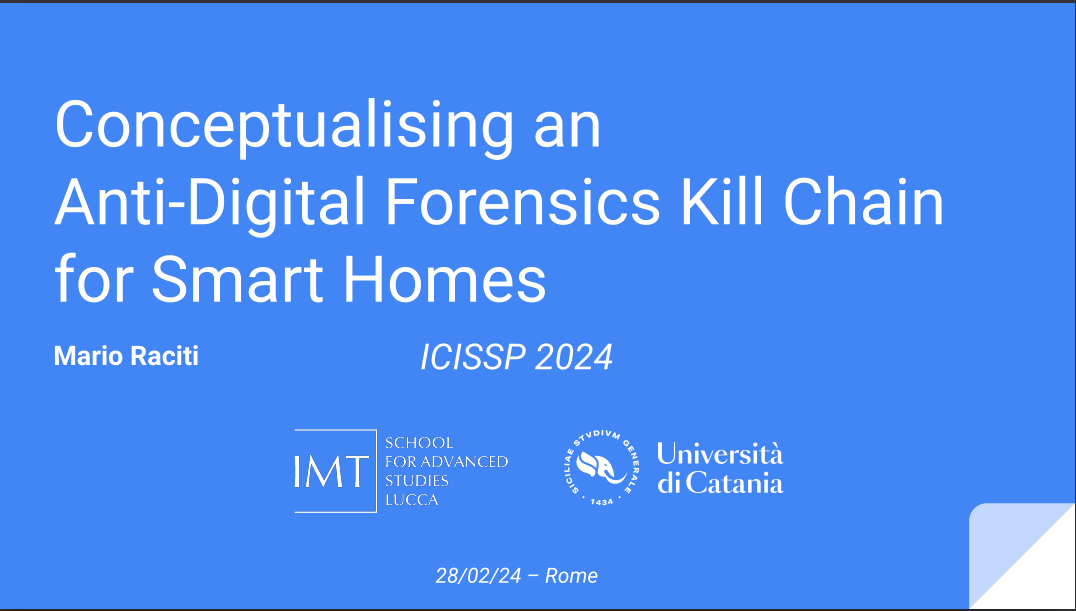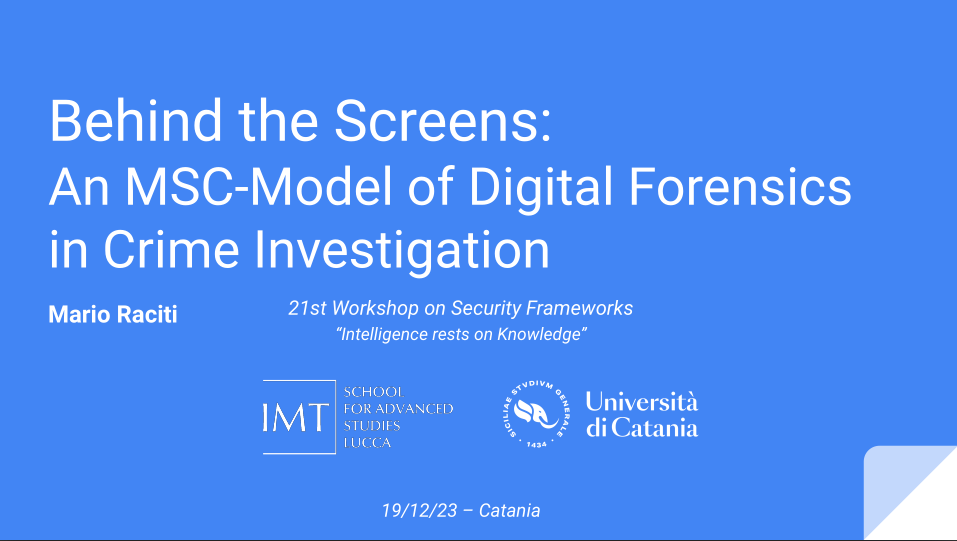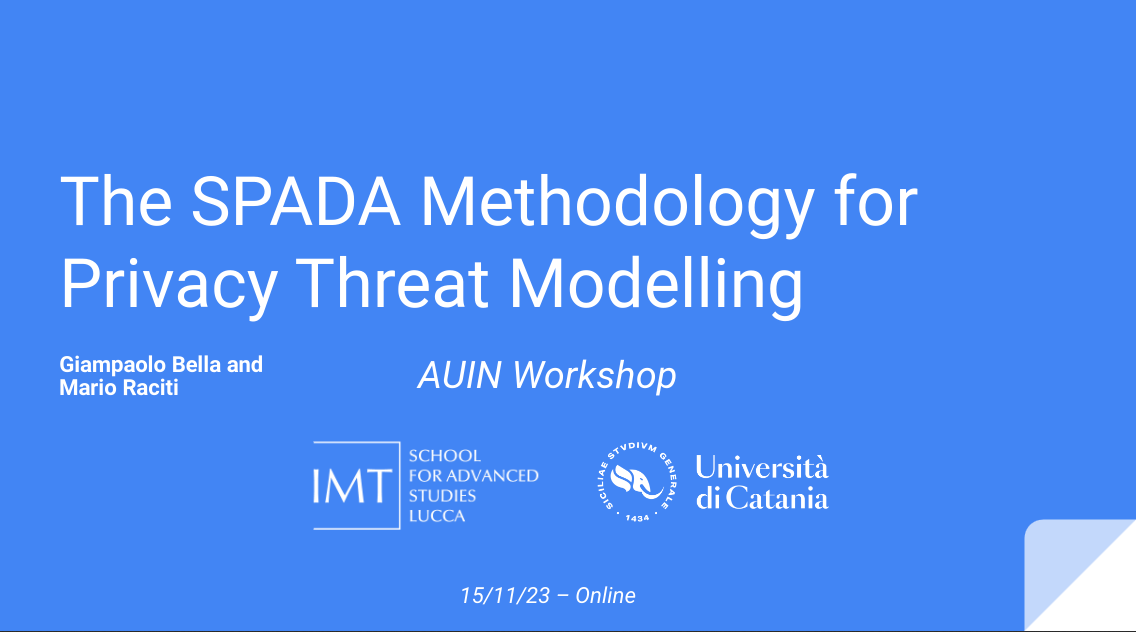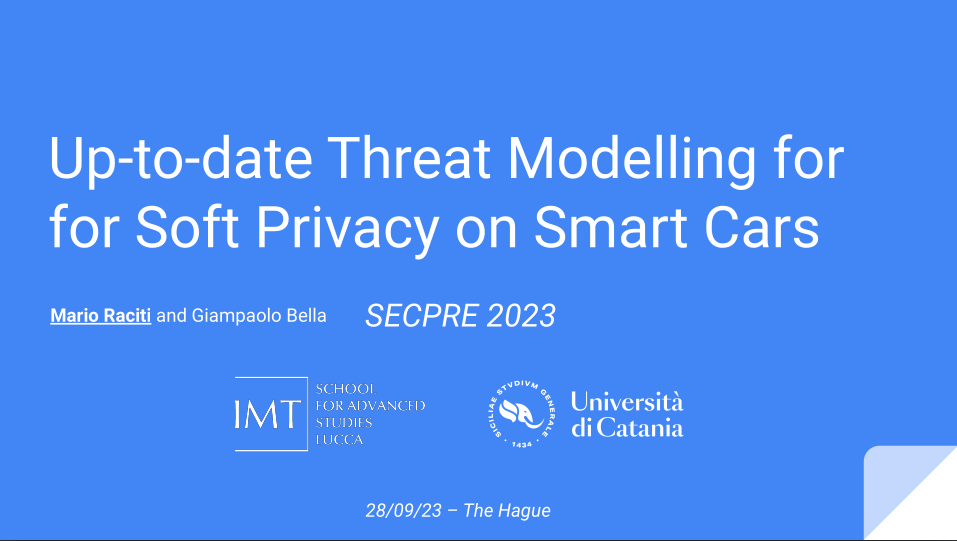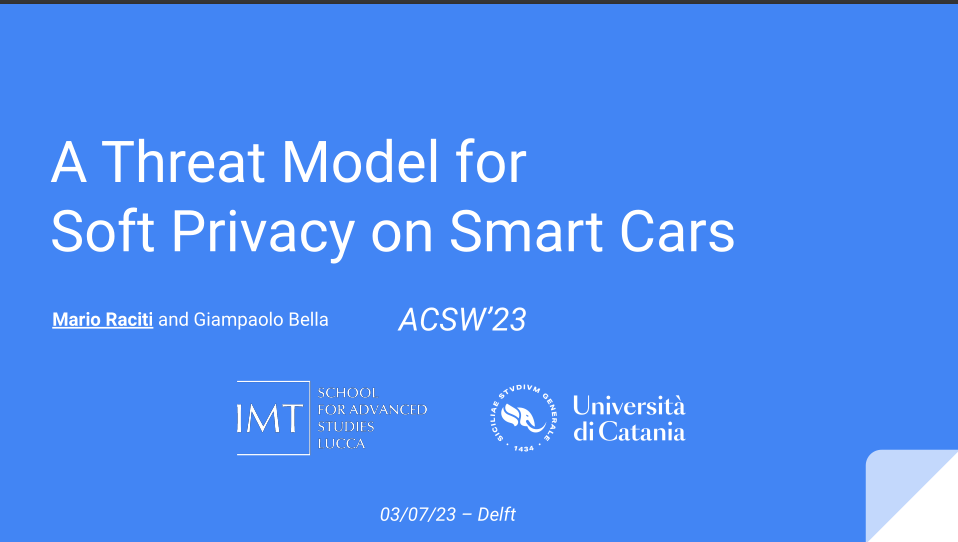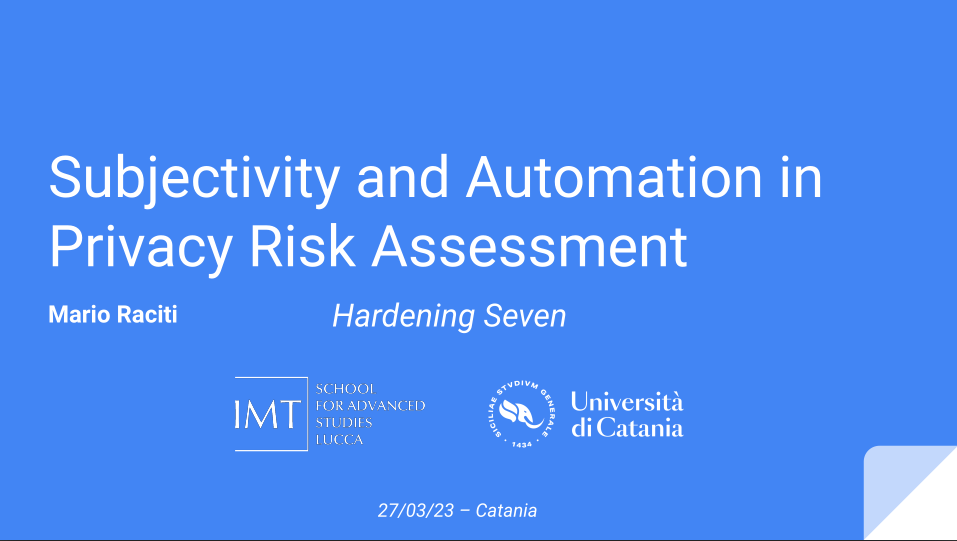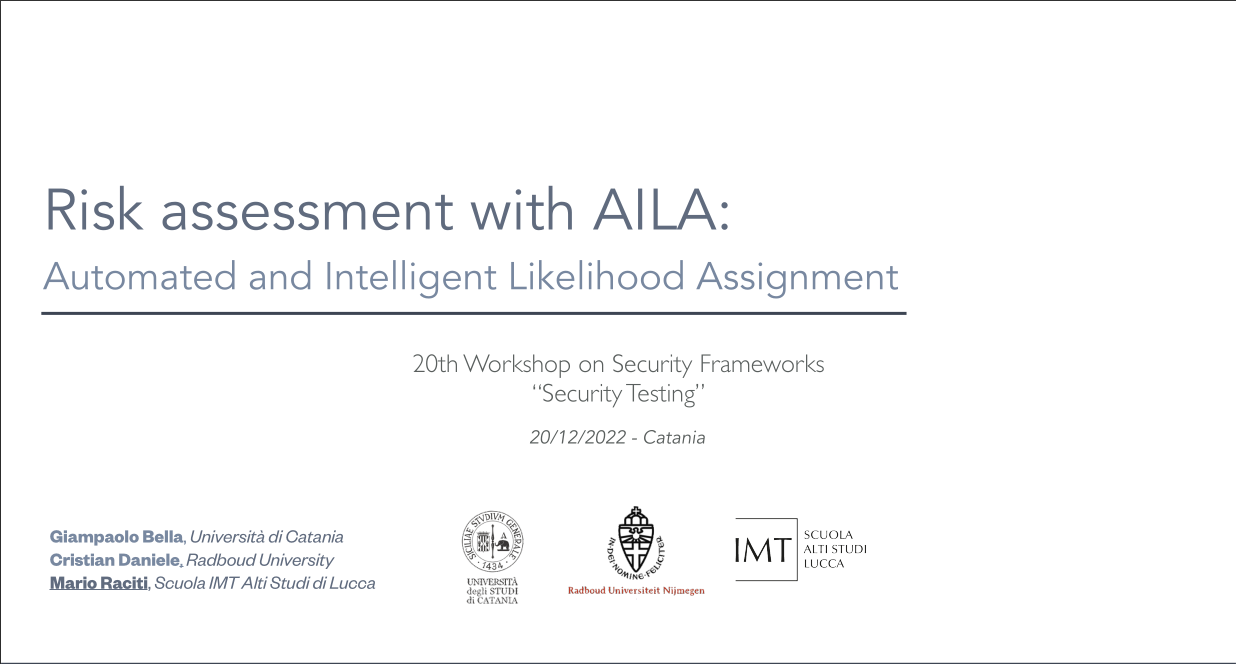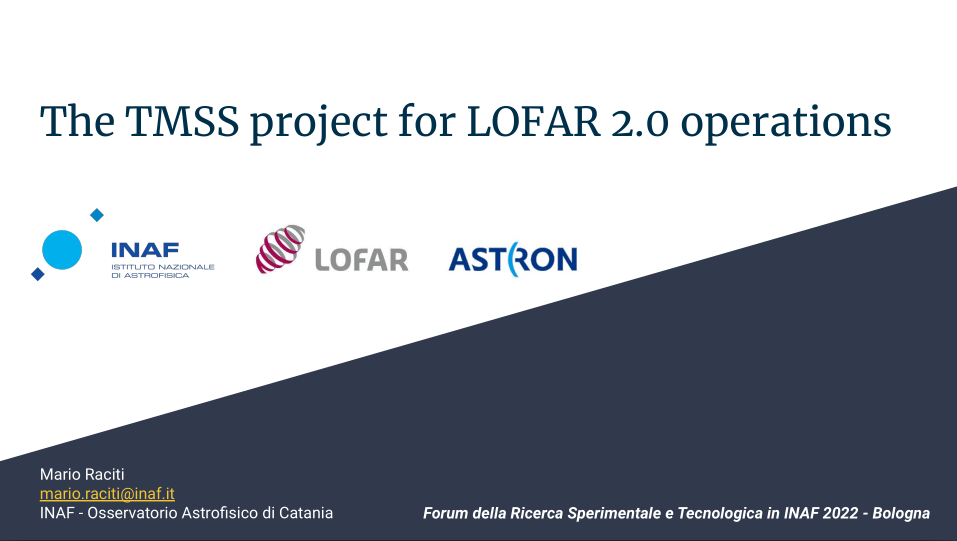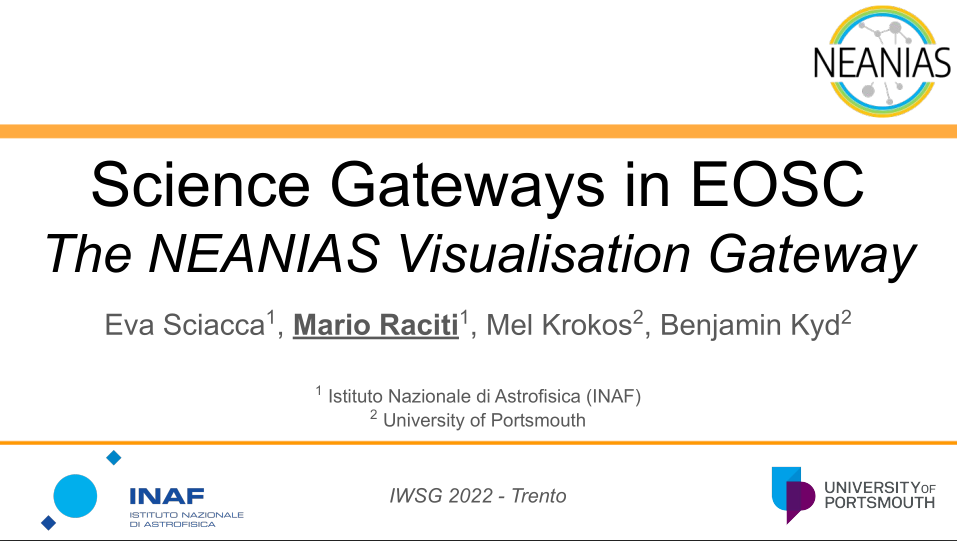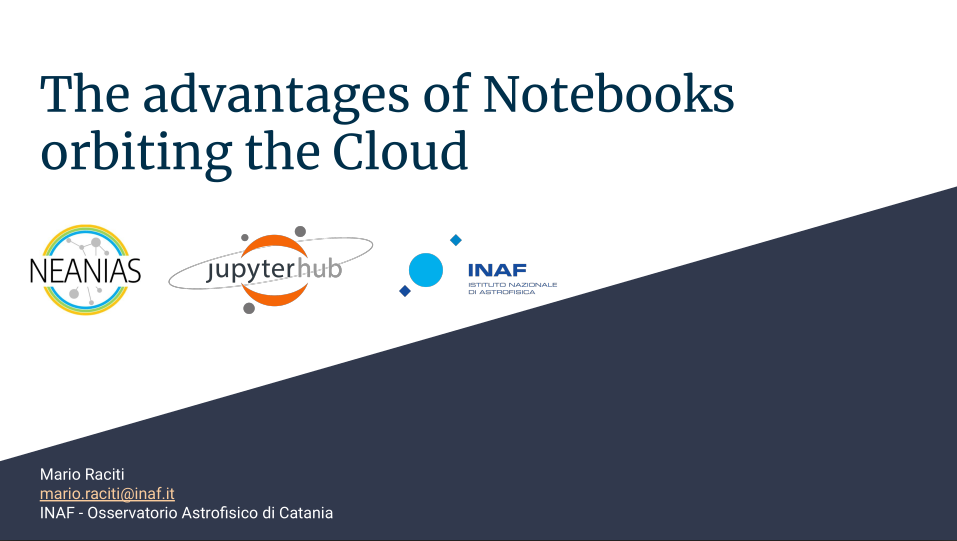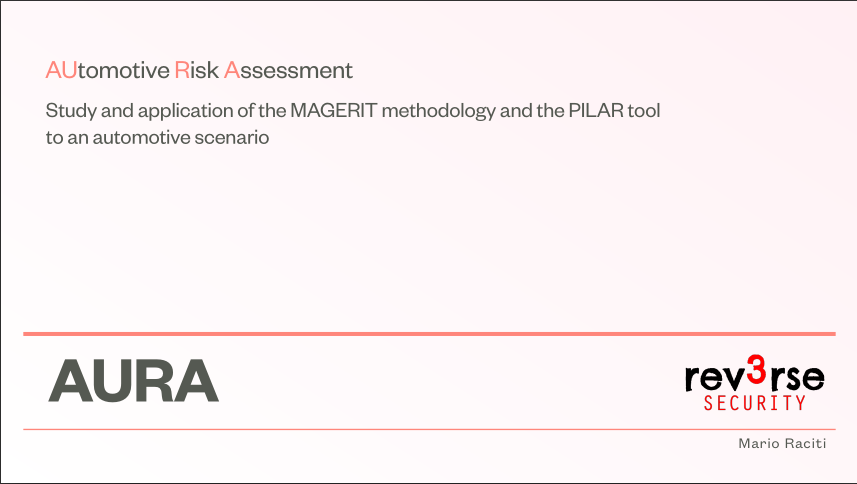Mario Raciti
PhD Researcher in Cybersecurity
tsumarios' blog
CySec and Research - A cool description might be something like:
"a place where I post about my research and share resources".
Featured Posts
You can find more articles in my Personal Blog.
(Gen)AI4CySec
Jul 13, 2024 • ai,
cti, dfir
This blog post introduces you to the (Gen)AI4CySec project, which highlights the practical
applications of Generative AI
(GenAI) in cybersecurity.
A Primer on Cryptocurrency Investigation and Forensics
Sep 02, 2023 • dfir
An introductory exploration of Cryptocurrency Investigation and Forensics, with a demo on a
real-world RaaS case.
Visual Cryptography Explained
Oct 21, 2022 • cryptography,
dfir
An overview about Visual Cryptography and implementations of the main state-of-the-art techniques in
the VCrytpure open source project.
~$ whoami

Security Researcher at NaS.Inf.
Host of the HoneyPod podcast.
Admin/Writer at Rev3rse Security.
Interests: CySec and Privacy Threat Modelling, Anti-Forensics, Cyber Threat Intelligence.
Short Bio
I am a PhD Student of the first
National PhD in Cybersecurity at IMT School
for Advanced Studies Lucca, assigned at the University of Catania, where I joined the Networks and Security Informatics
(NaS.Inf) research lab. I was a visiting researcher at Fondazione Bruno Kessler, where I joined
the Center for Cybersecurity. I was
previously also a visiting researcher at KU
Leuven, where I
joined the DistriNet
research unit.
I hold a Master's degree in Computer Science (Network and Security Systems) from the
University of Catania. My Master's thesis focused on cybersecurity risks in modern
vehicles.
Before starting my doctorate programme, I worked as a Research Fellow at the Italian
Institute for Astrophysics (INAF) for 2 years.
My research interests cover the CySec and Privacy Threat Modelling, Anti-Forensics, and
Cyber Threat Intelligence fields.
Experience
-
Apr 2025–Oct 2025
Research - Fondazione Bruno Kessler - Center for Cybersecurity
Visiting Researcher. Cybersecurity and Privacy Threat Modelling - Threat Modelling Automation with Multi-Agentic LLMs.
-
Feb 2025–Mar 2025
Teaching - Le Panier S.R.L.
Instructor. Basic digital skills for information and data management - Digital culture and cybersecurity awareness - AI.
-
Dec 2022–Nov 2025
Research - IMT School for Advanced Studies Lucca - NaS.Inf
PhD Researcher. Cybersecurity and Privacy Threat Modelling - (Anti-)Digital Forensics - Cyber Threat Intelligence - Cryptocurrency Investigation and Cybercrime - IoT Privacy and Security - Research Method - Project Management - Research Grant Application.
-
Mar 2020–May 2020
Internship - INAF-OACT
Trainee. REST-ful APIs and Web service implementation for the EOSC cloud as part of H2020 NEANIAS.
-
Feb 2019–ongoing
Community Collaboration - Rev3rse Security
Blog Writer - Admin. Technical ICT Security blogging on research, proof-of-concepts and tutorials.
Research Projects
-
Jan 2025-Nov 2025
SCAR’s Four Security-Unravelling Dimensions - SCAR4SUD
Team Member. IT PNRR Spoke 7 SERICS. Design and application of a reference framework for the automotive sector, integrating multi-layered security and privacy practices using STRIDE and LINDDUN.
-
Nov 2024-Nov 2025
Supply Chain Attack Avoidance - SCAI
Team Member. IT PNRR Spoke 6 SERICS. Design and application of an automated threat modeling methodology using NLP and LLMs to integrate cybersecurity, AI, and human-factor risks from regulatory frameworks.
-
Feb 2024-Oct 2024
Privacy Enrooted Car Systems - PECS
Team Member. EU NGI Trustchain Project. Design and implementation of a multisensory-media car interface for the static definition and dynamic runtime control of privacy policies.
-
Nov 2023-Nov 2025
Future generation Security for smart and connected Cars - FuSeCar
Collaborator. PRIN 2022 Project. Design and application of a methodology for the de-anonymisation and linkability of personal data in realistic connected vehicle scenarios.
-
Sep 2023-Nov 2025
Future Artificial Intelligence Research - FAIR
Collaborator. PNRR MUR Project. Analysis of multimodal document sources for the elicitation of a complete list of threats, while avoiding redundancy and subjectivity.
-
May 2023-Jul 2024
Following the Crypto Rabbit - How to Track RaaS Attacks on the Blockchain
Team Member. Design and implementation of a blockchain analysis and querying approach using temporal logic for criminal investigations, including Ransomware-as-a-Service.
Additional Responsibilities
-
Peer Review
Oxford Journal of Cybesercurity, PeerJ Computer Science, SEC@SAC 2026, ESORICS (2023-25), ACSW (2024-26), SAC-SRC 2025.
-
Technical Program Commettee
IEEE EuroS&P ACSW (2024-26).
-
MSc Theses (External Co-Advisor)
2025 – Simone Di Mauro. AETHER (Asset-based Elicitation of THreats from Extensive Regulations) - From NLP clustering to multi-agent LLM reasoning towards compositional risk taxonomies. Università degli Studi di Catania.
2024 – Ruben Cacciato. Elicitation of Privacy-Compromising Data in the Facilities Layer of the ETSI ITS-G5 Protocol Stack: A Focus on Linkying and Identifying Threats. Università degli Studi di Catania.
International Events
-
Sep 2024-Sep 2024
Summer School - SECAI
PhD Student. Summer School on Security and Privacy in the Age of AI 2024 - Security and privacy aspects of AI, security and privacy solutions with advanced AI, state-of-the-art ML to higher security and privacy levels, establishing stronger ties between academia and industry.
-
Jun 2024-Jun 2024
Summer School - CySeP
PhD Student. Cybersecurity and Privacy (CySeP) Summer School 2024 - Cybersecurity and Privacy challenges, fundamentals, cutting-edge solutions, and latest research results.
-
Jul 2023-Jul 2023
Summer School - IFOSS
PhD Student. International FOrensics Summer School (IFOSS) 2023 Edition - Digitalisation and forensic data science: from evidence acquisition to interpretation.
Certifications & Courses
-
2025
Windows Forensics - Belkasoft
2024
5-day Generative AI Intensive Course - Google
Generative AI: Boost Your Cybersecurity Career - IBM
Android Forensics - Belkasoft
-
2020
Autopsy 8-Hour Online Training - BasisTech
Education
-
2022–ongoing
PhD Degree - IMT School for Advanced Studies Lucca, assigned at DMI.UNICT, Italy.
PhD-CySec - National PhD in Cybersecurity - Software, System, and Infrastructure Security, EQF 8
-
2018–2020
Master's Degree - DMI.UNICT, Italy.
LM-18 - 2nd level degree in Computer Science - Network and Security Systems, EQF 7
Selected Publications
The full list is available on my ResearchGate profile.
-
Van Landuyt et al. (Nov 2025) A comparative benchmark study of LLM-based threat elicitation tools.
In Future Generation Computer Systems. -
Maugeri et al. (In press.) AI-related Vulnerabilities within CVEs: Are We Ready Yet? A Study of Vulnerability Disclosure in AI Products.
In Proceedings of the 18th ACM Workshop on Artificial Intelligence and Security (AISec 2025). -
Verreydt et al. (In press.) On the usefulness of LLM-generated threat descriptions.
In 4th International Workshop on Designing and Measuring Security in Systems with AI (DeMeSSAI 2025). -
Bellemans J. et al. (Jun 2025) From Cluttered to Clustered: Addressing Privacy Threat Explosion through Automated Clustering.
In the International Workshop on Privacy Engineering (IWPE 2025). -
Raciti M. et al. (Jun 2025) To See or Not to See: A Privacy Threat Model for Digital Forensics in Crime Investigation.
In 13th International Symposium on Digital Forensics and Security (ISDFS 2025). -
Raciti M. and Bella G. (Mar 2025) The SPADA Methodology for Threat Modelling.
In International Journal of Information Security. -
Blanchini M. et al. (Aug 2024) Supporting Criminal Investigations on the Blockchain: A Temporal Logic-based Approach.
In Proceedings of the Italian Conference on Cyber Security (ITASEC 2024). -
Raciti M. and Bella G. (May 2024) Behind the (Digital Crime) Scenes: An MSC Model.
In 12th International Symposium on Digital Forensics and Security (ISDFS 2024). -
Raciti M. (Mar 2024) Conceptualising an Anti-Digital Forensics Kill Chain for Smart Homes.
In Proceedings of the 10th International Conference on Information Systems Security and Privacy (ICISSP 2024). -
Raciti M. and Bella G. (Mar 2024) Up-to-date Threat Modelling for Soft Privacy on Smart Cars.
In 7th International Workshop on SECurity and Privacy Requirements Engineering (SECPRE 2023). -
Raciti M. and Bella G. (Jul 2023) A Threat Model for Soft Privacy on Smart Cars.
In 2023 IEEE European Symposium on Security and Privacy Workshops (EuroS&PW). -
Raciti M. and Bella G. (Apr 2023) How to Model Privacy Threats in the Automotive Domain.
In Proceedings of the 9th International Conference on Vehicle Technology and Intelligent Transport Systems (VEHITS 2023). -
Bella G. et al. (Feb 2023) The AILA Methodology for Automated and Intelligent Likelihood Assignment in Risk Assessment.
In IEEE Access. -
Bella G. et al. (Aug 2022) The AILA Methodology for Automated and Intelligent Likelihood Assignment.
In 6th International Conference on Cryptography, Security and Privacy (CSP). -
Raciti M. (Jun 2022) The TMSS project for LOFAR 2.0 operations.
Poster in Forum della Ricerca Sperimentale e Tecnologica in INAF (2022). -
Raciti M., Vitello F. R. (Mar 2022) WebSocket Integration in Django.
INAF Technical Reports.
Talks and Presentations
(Click on the cover image to download slides)

アマヤラ Lab
アマヤラ (Android Malware Analysis YARA) Lab is a project that provides a ready-to-use Jupyter Lab environment to help out with Android malware analysis using YARA rules. It automatically analyses files with your YARA rules and stores the results in a JSON file. YARA rules are checked against both the APK file itself and its content (recursively). アマヤラ Lab also gathers some information about the file(s) that you want to analyse from the Virus Total and Malware Bazaar APIs, using your own API keys. Eventually, The results include a link to Pithus which is valid only if the file was already uploaded.

AURA
AURA (AUtomotive Risk Assessment) is the name of my Master's thesis. In this work we propose a Risk Assessment exercise applied to an automotive scenario, according to the MAGERIT methodology and with the support of the PILAR commercial tool, in order to seek whether both of them may prove to be useful in the automotive field, with specific attention paid to potential threats against personal data en route from/to connected vehicles. Moreover, we also provide a regression analysis study of the algorithm implemented in Pilar for the purposes of reverse engineering, to better understand the values calculated by the tool in the demo.

VCrypture
VCrypture is an online service that allows you to encrypt your secret images safely using visual cryptographic algorithms. VCrypture is composed of two mainly parts: VCrypture-API and VCrypture-Web. The latter is a web server which provides the front-end as well as forwarding users' requests to the API core, whilst the former aims to perform visual cryptographic operations on images. The user can choose between four visual cryptographic algorithms: Naor-Shamir, Taghaddos-Latif, Dhiman-Kasana EVCT(N, N) and Dhiman-Kasana EVCT(K, N).

DSR Bad
The Dynamic Source Routing (DSR) protocol is an example of reactive routing protocol for MANET networks. To work properly, DSR requires nodes to collaborate without maliciously inhibiting routing operations. In this scientific paper we present DSR Bad, a modification of the DSR module present in the ns-3 simulator, through which we aim to study and analyze two examples of non-cooperative scenarios that allow us to observe the impact suffered by the protocol and its reaction to situations not normally foreseen.

QueKey
QueKey is the name of my Bachelor's thesis. The project is a cloud system for IoT Smart Lock devices placed in hotels and B&Bs. Its aim is, on the one hand, to make easy the handling of rooms and builds for the hotel managers and, on the other side, to give to their guests an easy way to lock and unlock rooms. QueKey consts of a main cloud service and of two physical devices: a RaspberryPi 3 (also other little boards are compatible with the system) and a NodeMCU with ESP8266 WiFi module.

FIAR
FIAR (Four-In-A-Row) is an online multiplayer game, with a vaporwave futuristic design inspired. Developed using NodeJS (Express & Socket.IO with rooms handling) and p5.js library (Processing based). FIAR can be played on Desktops, Tablets and Smartphones, thanks to its responsive design. Indeed the canvas containing the game is created in order to fit most of the display sizes.
Get in touch!
Please feel free to contact me
for any questions.
Don't forget to follow me on socials! I actively post cybersecurity news and
resources.

